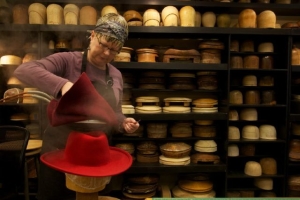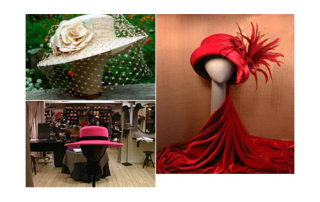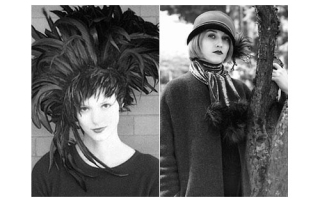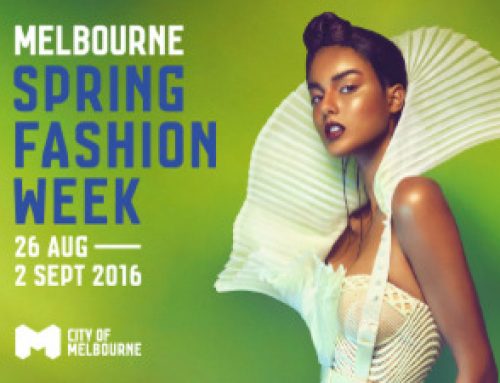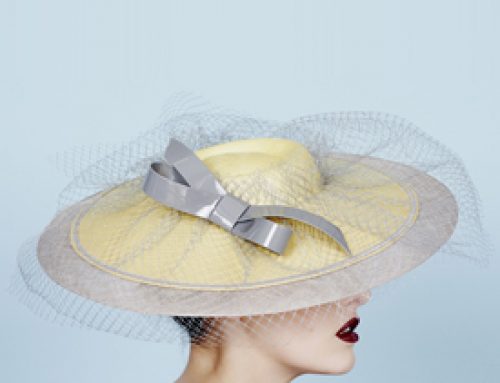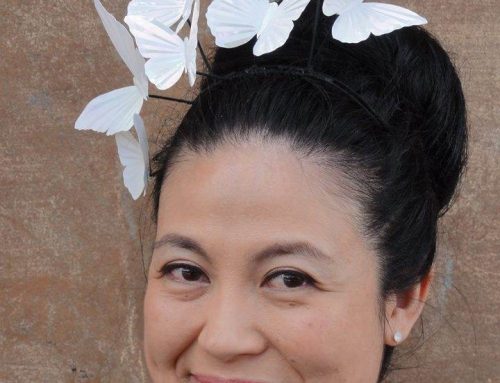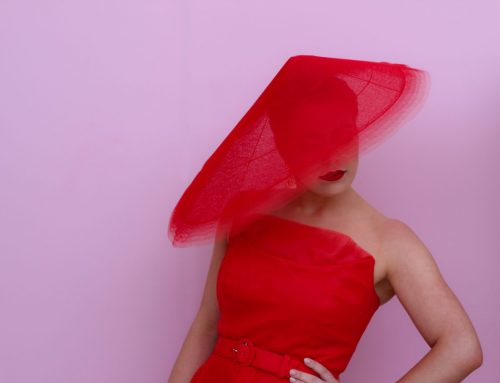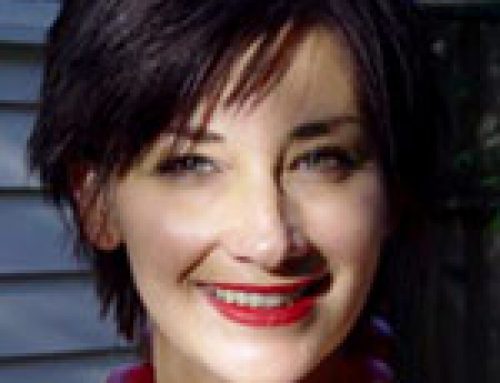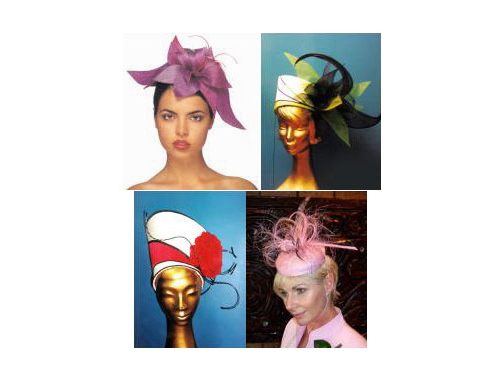I have always loved fashion yet always tried to be a little bit different than what was in vogue. In the early eighties, I was trying to find a particular style of hat. In the hat section at Nordstrom’s department store, while disappointedly trying on over decorated, ill fitting hats, a salesgirl told me about a milliner in Seattle named John Eaton who could surely help me. I went directly across the street to a phone booth and called Mr. Eaton who pleasantly invited me over for a consultation.
Where did you learn millinery?
Upon entering Mr. Eaton’s millinery workshop in Seattle (Washington), I was completely mesmerized by the blocks, raw materials and all the equipment that goes into the craft of hat making. After learning that he taught millinery courses I immediately enrolled and, before the end of my first introductory class, I was honored to be asked by Mr. Eaton to become his apprentice. For three years I spent every spare moment I could in the millinery studio. Working with Mr. Eaton was a huge inspiration for me in deciding to make millinery my career. During the 1940s he had worked as a milliner and fashion designer in New York, where he had clients from Gypsy Rose Lee to Beverly Sills. He returned to Seattle in the 1950s and opened a design boutique called “John Eaton, Of Course” before retiring to teach from his home. Nearly every milliner working in the Northwest today received their training either directly from John Eaton or from one of his students.
How long have you been a milliner for? Where else did you work?
For the past 20 years I have worked at and studied millinery while patiently watching the slowly revitalizing millinery industry. I’ve worked at many other jobs during this time to make ends meet – dental assistant, office manager, chauffeur and too many waitress positions. I joyfully opened my millinery boutique and became a full-time milliner in 1998.
Where do you get inspiration for your designs?
Fabric, vintage ribbons and baubles, unusual color combinations, nature, old movies and street wear.
What has been your most enjoyable commission?
I’ve had so many great commissions: impeccably stylish older women, hip and hot younger women, brides and brides’ mothers. A more unusual but very rewarding commission experience was being asked to make miniature hats for auction to raise money for the Maryhill Museum of Art to house the fabulous 1940s “Theatre de la Mode” collection of French fashions. Incredibly detailed three-foot high mannequins were dressed in apparel and accessories designed by famous Parisian haute couture designers of the time and set in elaborate theatrical stages. I teamed up with local fashion designers to create a set of the dolls in the spirit of the originals, which did extremely well at the fund raising gala. The “Theatre de la Mode” now has a climatized permanent home at Maryhill and it also goes on world tour.
How do you describe your style of hats?
Elegant, sleek, sexy, forward, witty, well made and, most of all, wearable.
Who do you make hats for?
I am delighted that lately my clientele has become so diverse in age, style and fashion. I enjoy the challenge of trying to fulfill the desires of so many different women.
What materials and techniques do you favor?
I love felt. After 20 years I am still amazed at how much there is to learn about working with it. Becoming frustrated with how few blocks I had, I started experimenting with hand blocking or sculpting designs. Now I find the possibilities endless! Also I’m enjoying working with rarer, higher quality straws I’ve searched out from around the world. I consider myself incredibly lucky and blessed to be working at this craft.
Any other interests?
Often hats seem to be my whole life! When I’m not making hats I am busy with fashion shows, benefits and giving lectures and demonstrations on millinery technique and history to various groups and organizations. I do like interior design, travel, cats, dogs, trees and flowers.


